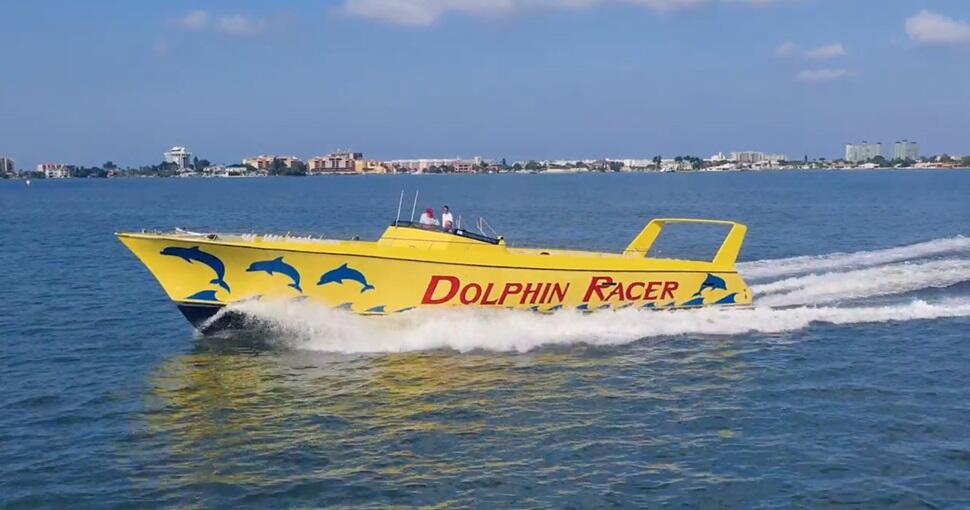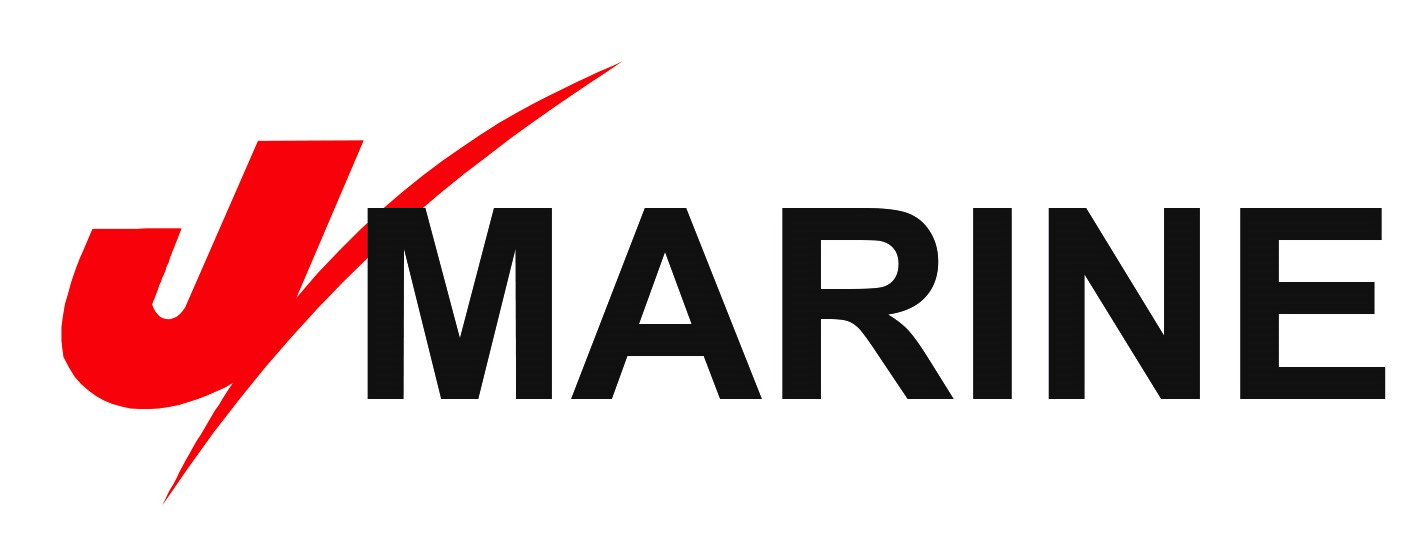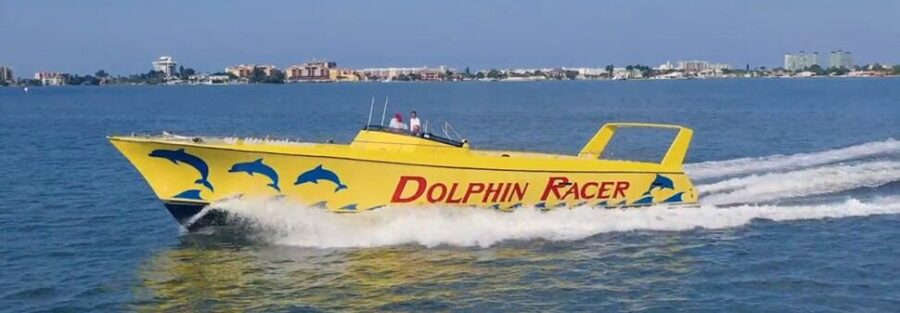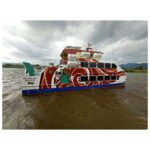
Florida West Coast Cruises Inc., managed by sister-company Starlite Cruises, selects Volvo Penta’s D13-700 engines for its Dolphin Racer, a 120-passenger vessel offering high-powered dolphin cruises. The 700-horsepower D13 satisfies the company’s need for a powerful, reliable, and environmentally friendly engine.
Florida West Coast Cruises Inc., managed by sister company StarLite Cruises, considers itself in the business of making people happy. And what better way to generate happiness than by offering high-speed rides with dolphins?
The South Pasadena, Florida, company offers one to two narrated dolphin cruises daily along the waterways next to the picturesque St. Beach area. Its bright yellow 120-passenger boat races through the Gulf’s majestic blue waters, creating an impressive wake that invites dolphins to jump and body surf alongside the vessel.
Captains know where dolphins hang out and will play by the boat. This knowledge ensures passengers see dolphins playing in the boat’s “surf” 98% of the time. The playful adventure happens so often that the company guarantees it. “Passengers will not only see dolphins but will see them body surfing and jumping in the wake created by the speedboat,” Henderson says. “If they don’t see a dolphin playing in the wake, their next cruise is free.”
Being such a popular attraction requires a reliable vessel powered by an ultra-reliable motor. StarLite Cruises sought to repower the Dolphin Racer after a mechanical failure with one of their old engines. “We had rebuilt the engines twice during our ownership of the vessel, and since we used a rare breed of the engine, we knew parts would be hard to find and the cost to rebuild both engines would be half of what a repower would cost,” he says.
The company decided to repower with newer fuel efficient and environmentally friendly engines. Henderson reports the 700-horsepower D13’s reputation and its 2,300 rpm of torque attracted StarLite to Volvo Penta.
“Although the engine has lower horsepower, we knew it would provide the power we needed to operate our cruises,” he says. “And though the engines are inline 6-cylinder engines and are taller than a V-style configuration, they still fit in the engine room.”
The vessel lost speed in the repower but compensates for that with an impressive amount of torque, which gets the Dolphin Racer on plane easily and efficiently. Henderson explains, “The top speed is lower than what was achievable with the higher horsepower engines, but we rarely needed that level of speed, so it was a positive trade off.”
The Volvo Penta D13-700 is an in-line 6-cylinder, 12.8-liter, diesel engine using a high-pressure unit injector system, overhead camshaft, and a twin-entry turbo using a water-cooled exhaust manifold. This combination contributes to world-class fuel efficiency, excellent operating economy, and exceptionally low emissions.
“We are saving between 35% and 40% in fuel consumption with the new Volvo Penta’s,” adds Henderson.
StarLite Cruises puts the passenger experience at a premium and Henderson reports the Volvo Penta helps them deliver. The D13’s variable injector pressure and efficient cooling system lowers noise levels, meaning the repowered vessel runs smoother and quieter. “The engines run so much quieter that it makes the captain’s narration easier to hear,” he says.
Returning passengers will also notice a significant reduction in smoke on the repowered vessel. “With the older engines we always had a large amount of black smoke (unburned diesel fuel) as we throttled up to get on plane,” Henderson says. “We also had a steady stream of undesired smoke as we cruised on plane. With the new engines, smoke is practically nonexistent.”
The StarLite repower also upgraded the vessel’s older pneumatic controls to electronic ones that are exceptionally smooth and produce immediate response. “The new electronic controls allow more precise control of engine speed and the synchronizer minimizes harmonics caused by minimal differences in engine speeds,” he says.
Florida Detroit Diesel-Allison (FDDA) oversees maintenance for the Dolphin Cruiser. Routine maintenance at 100, 200, 500 and 1,000 hours is about all the boat ever needs. StarLite Cruises handles day-to-day maintenance itself.
“The engines have a smaller footprint in the engine room, which allows for easier physical movement around engines when performing service,” Henderson says. “We are approaching our first larger service at 500 hours and have had no maintenance issues.”
The Dolphin Racer’s positive repower experience puts Volvo Penta in StarLite’s sights for future repowers. The company’s Tier III engines fit well with StarLite Cruise’s environmental strategy.
Henderson expects this trend to continue. “In today’s world it as important to be environmentally responsible as it is to be economically feasible, while maintaining adequate horsepower,” he explains. “We have replaced and plan to continue replacing older diesel engines with new Tier III products whenever it is economically feasible as engine rebuild/replace scenarios arise.”



